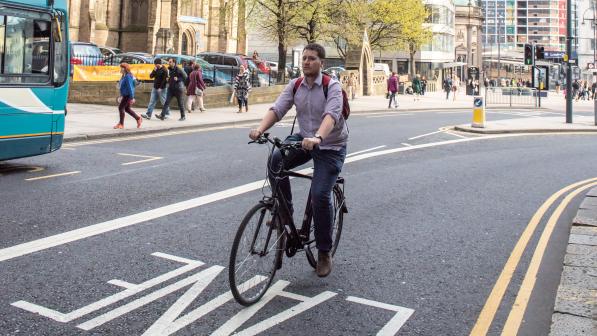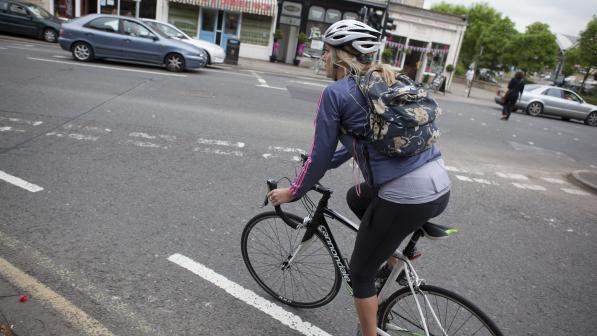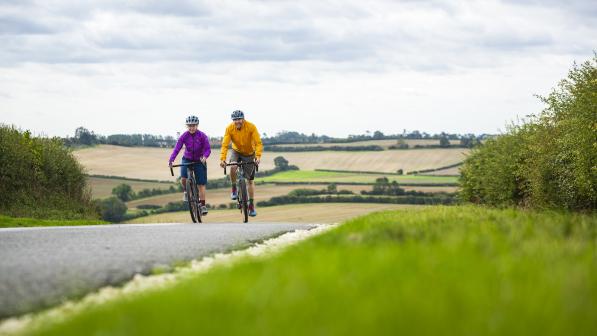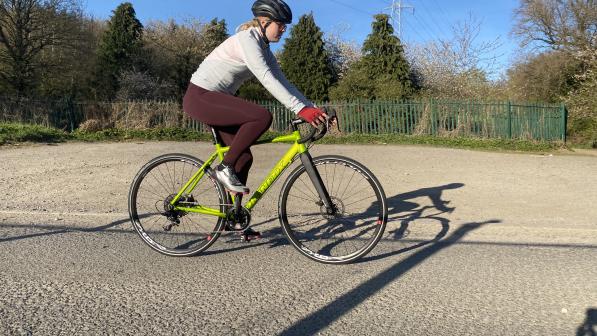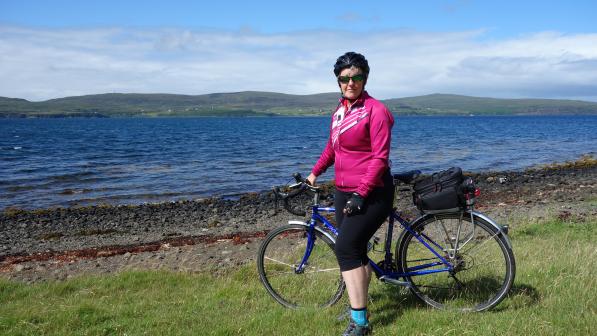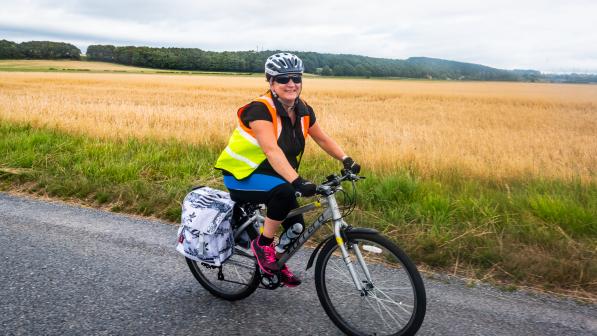How to build confidence to cycle on the roads

Riding a bicycle is one of the most valuable life skills you can have, and there really is no age limit on learning how to ride a bike either. Whether you're picking up for the first time since childhood or your cycling experience is still in its infancy, riding a bike regularly is a fantastic way to improve your quality of life.
Cycling is a great way to improve your fitness, mental health, socialise with friends and, of course, get around town. However, traffic-free cycle paths may not get you directly from A to B, and hopping onto the main road may be necessary for your journey. These tips will help you on your way.
Cycle training
Booking yourself onto a cycle training course can do wonders for improving your road cycling knowledge and confidence. With bespoke tuition from a qualified instructor, you’ll be taken through the motions of riding on the road while making key observations and decisions.
Cycle training is typically offered in a group setting, which is a great way to meet like-minded people who are also looking to improve their skills and confidence on the road. If you would prefer individual tuition or family training, many individual instructors and organisations also offer this.
For more information on cycle training, head over to Bikeability, which delivers cycle training to children and families across England. Alternatively, be sure to check out Cycling UK’s courses which cover a wide variety of road and off-road training.
The Highway Code
The Highway Code isn’t only aimed at drivers; it applies to all road users whether you drive a car or ride a bike. Becoming more familiar with the Highway Code will provide you with the necessary information about what road users can and can’t do, and as a cyclist, what your rights are.
Familiarise yourself with everything from lane discipline to road signs and traffic signals to navigate the roads safely. We know the whole Highway Code is jam-packed with information, some of which won’t be suitable for you as a cyclist, so to help narrow it down, sections for cyclists range from number 59 to 82.
Road positioning
When cycling on the road, your default position should be on the left-hand side of the lane, even if multiple lanes are going in the same direction. However, defaulting to the left to ensure cars can get by doesn’t mean you should be in the gutter!
As Cycle magazine editor Dan Joyce correctly states, as a cyclist: “You are the traffic. Being in the traffic stream helps you to be treated like traffic.” When it comes to drains, potholes, debris or other road users, as a cyclist, you have every right to pull further into the lane if necessary and when it’s safe to do so.
If you need to manoeuvre into the lane to avoid an obstacle, slow and steady your speed, look over your right shoulder for any oncoming vehicles. At this point, you can also outstretch your right arm to indicate your intentions to other road users before moving over.
Hand signals
Just as cars have lights to signal to turn and stop, cyclists use hand signals to notify road users of their intentions. While it may take some practise to learn how to safely signal with one hand off of your handlebars, signalling where you intend to move or if there is a hazard on the road is essential for avoiding any mishaps.
Cycling UK has a helpful guide to get you started with cycling hand signals, what they mean, and how to execute them properly.
Practise
As with anything new or unfamiliar, it’s always best to start small and build yourself up to more significant attempts. Rather than plan your first road ride as a 50-mile city adventure, start in a quiet area around your home to practise your road positioning and hand signals while paying attention to pedestrians and other road users.
Once you feel confident, venture further out to incorporate more of a route that includes busier roads or longer distances. When practising your road cycling skills, consider the time of the day, like rush hour traffic which will cause the streets to be busier than usual.
Plan your route
Before you swing your leg over your bike and head out the front gate, it helps to know where you’re going and the best way to get there. Even if you know the way via bus or car, you may be able to safely incorporate cycle paths and bridleways into your ride to minimise traffic interactions.
Cycling UK has an excellent Journey Planner tool that allows you to find the best route to your destination, whether that’s a local ride into town or further afield on an adventure.
Ride with a friend
Once you’ve mastered hand signals and you’re feeling ready to take on the high streets and busier main roads, consider setting off on your first outing with a friend.
Riding with a friend will help further your confidence as a second pair of eyes will help spot changes in traffic and any potential hazards which may arise. Not to mention, cycling is much more fun when you can have a chat and feel at ease with people you can rely on.
Bike check
A great way to feel confident when cycling on the road is by ensuring you and your bike are ready.
Your bicycle needs attention every once in a while, whether that’s giving it a good clean when it’s filthy, storing it undercover or booking it in at your local bike shop for a service.
Also, as there are many moving parts to your bike, time and wear can adversely affect their performance. This is certainly the case if your bike has suffered from any impact. The last thing you want is to suffer from a broken chain or slippery brakes when out on a ride.
The M-check is a sure-fire way to check your bike over before every ride. To learn how to carry out a pre-ride M-check, have a look at our handy video tutorial.
Be prepared
Whether you’re cycling near or far, there are some things you need to be prepared for. The most common situation cyclists find themselves in is suffering from a punctured tyre, but they don’t have to stop you in your tracks. Having the skill and confidence to repair a puncture while out on the ride will help you feel like you’re ready for anything.
There are only a few tools involved, all of which can be easily stored in a bag or small pouch that attaches your bike directly. We have the ultimate how-to video for puncture repair, which you can follow at home and practise yourself.
Now that you’re armed with all the tools, skills, and knowledge for confidently cycling on the roads, the only thing left is getting outdoors and practising.
The Cycling UK website has a wealth of cycling tutorials, guides and top tips that will help you enjoy cycling to its fullest.
